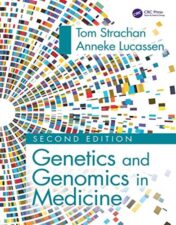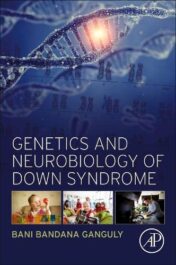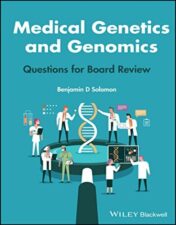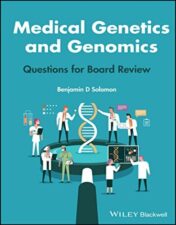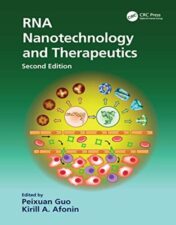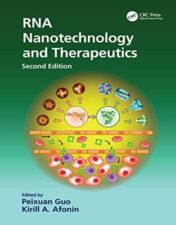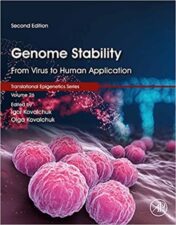Discover the Best Genetics Books to Expand Your Knowledge
Explore the Latest Genetics Books at DentalBooks.net
Are you looking for the latest genetics books to help you understand the science behind genetic engineering? Look no further than DentalBooks.net. Our selection of genetics books covers a wide range of topics, from basic genetics to advanced genetic engineering techniques. Whether you’re a student or a professional, you’ll find the perfect book to help you understand the complexities of genetics. With our easy-to-use search engine, you can quickly find the book that best suits your needs. Plus, our customer service team is always available to answer any questions you may have. So don’t wait – explore the latest genetics books today at DentalBooks.net!
Basic Sciences Books
Basic Sciences Books
Messenger RNA Therapeutics (RNA Technologies, 13) (Original PDF from Publisher)
Basic Sciences Books
Making Genetics and Genomics Policy in Britain: From Personal to Population Health (EPUB)
Genetics Books
Inborn Metabolic Diseases: Diagnosis and Treatment, 7th Edition 2022 epub+converted pdf
Genetics Books
Fast Facts on Genetics and Genomics for Nurses : Practical Applications 2022 Original PDF
Genetics Books
Fast Facts on Genetics and Genomics for Nurses : Practical Applications 2022 epub+converted pdf
Genetics Books
Genetics Books
Genetics and Neurobiology of Down Syndrome 2022 Original PDF
Genetics Books
Genetics Books
Genetics Books
Genetics Books
Introduction
Are you looking to expand your knowledge of genetics? If so, then you've come to the right place! Discover the Best Genetics Books is here to help you find the perfect book to increase your understanding of this fascinating field. Our comprehensive list of books covers a wide range of topics, from basic genetics to advanced molecular biology. Whether you're a student, researcher, or just curious about genetics, we have something for everyone. With our expert reviews and ratings, you can be sure to find the best genetics book to suit your needs.
Introduction to Genetics: A Comprehensive Overview
The Human Genome Project and Its Impact on Genetics Research
Exploring the Role of Genetics in Disease and Health
Exploring the role of genetics in disease and health is an important area of research that has been gaining traction in recent years. Genetics plays a major role in determining our overall health, from physical traits to susceptibility to certain diseases. By understanding how genes influence our health, we can better understand the causes of various diseases and develop treatments that are tailored to individual patients.
Genetic research has revealed that many diseases have a genetic component. For example, some cancers are caused by mutations in specific genes, while other conditions such as diabetes and heart disease may be linked to inherited genetic variants. By studying these genetic links, researchers can gain insight into the underlying causes of these diseases and develop treatments that target the specific genetic factors involved.
In addition to identifying genetic links to disease, researchers are also exploring how genetic variations can affect our overall health. For instance, some genetic variants may increase the risk of developing certain diseases, while others may protect against them. By understanding these genetic influences, scientists can develop personalized treatments that are tailored to each patient’s unique genetic makeup.
Finally, genetic research is also helping to identify potential biomarkers for disease. Biomarkers are molecules or other indicators that can be used to detect the presence of a particular disease or condition. By identifying biomarkers, researchers can develop tests that can detect the presence of a disease before it becomes symptomatic, allowing for earlier diagnosis and treatment.
Overall, exploring the role of genetics in disease and health is an important area of research that has the potential to revolutionize the way we diagnose and treat various conditions. By understanding the genetic basis of disease, researchers can develop more effective treatments that are tailored to each individual patient.
Advances in Genetic Engineering and Biotechnology
Advances in genetic engineering and biotechnology have revolutionized the way we understand and interact with the world around us. Genetic engineering is a process of manipulating genes to create new organisms or modify existing ones. It involves introducing foreign DNA into an organism’s genome, which can be used to alter its characteristics. Biotechnology is the application of biological processes to industrial and commercial products. It includes the use of living organisms or their components to produce useful products such as medicines, food, and fuel.
The development of genetic engineering and biotechnology has enabled scientists to make significant advances in areas such as medicine, agriculture, and environmental protection. In medicine, genetic engineering has been used to develop treatments for diseases such as cancer, HIV/AIDS, and cystic fibrosis. It has also been used to create genetically modified organisms (GMOs) that are resistant to disease and pests, allowing farmers to increase crop yields. In addition, genetic engineering has been used to create new species of plants and animals, as well as to improve existing species.
In the field of environmental protection, biotechnology has been used to clean up contaminated sites, reduce air pollution, and develop renewable energy sources. For example, bacteria have been engineered to break down pollutants in water and soil, while algae have been used to produce biofuels. In addition, biotechnology has been used to develop new materials, such as bioplastics, which are made from renewable resources and are more environmentally friendly than traditional plastics.
Overall, advances in genetic engineering and biotechnology have had a profound impact on our lives. They have enabled us to develop treatments for diseases, increase crop yields, clean up contaminated sites, and develop renewable energy sources. As these technologies continue to evolve, they will undoubtedly bring about even more exciting developments in the future.
Understanding the Basics of Heredity and Inheritance
Understanding the basics of heredity and inheritance is essential for anyone interested in genetics. Heredity is the passing of traits from one generation to the next, while inheritance is the process by which those traits are passed down. Heredity and inheritance are both complex processes that involve a variety of factors, including DNA, chromosomes, and genes.
DNA, or deoxyribonucleic acid, is the genetic material found in all living organisms. It contains the instructions for building proteins, which are the building blocks of life. DNA is made up of four different nucleotides: adenine, thymine, guanine, and cytosine. These nucleotides form the double helix structure of DNA, which is responsible for the transmission of genetic information from one generation to the next.
Chromosomes are structures within cells that contain DNA. Humans have 23 pairs of chromosomes, with one set coming from each parent. Each chromosome contains hundreds or thousands of genes, which are the basic units of heredity. Genes are responsible for determining an individual’s physical characteristics, such as eye color, hair color, and height.
Inheritance occurs when a gene is passed from one generation to the next. This can happen in a variety of ways, including through sexual reproduction, where two parents pass on their genes to their offspring, or through asexual reproduction, where a single parent passes on its genes. In either case, the offspring will inherit a combination of genes from both parents.
In addition to genes, inheritance also involves environmental factors. Environmental factors, such as diet, lifestyle, and exposure to toxins, can influence the expression of genes. For example, a person may have a gene for a certain trait, but if they do not get enough of the right nutrients, the trait may not be expressed.
Understanding the basics of heredity and inheritance is important for anyone interested in genetics. By understanding how genes are passed from one generation to the next, and how environmental factors can influence the expression of genes, we can gain insight into how traits are inherited and how they can be modified.











